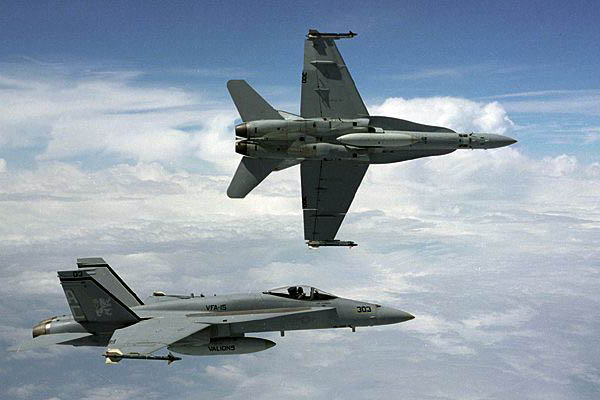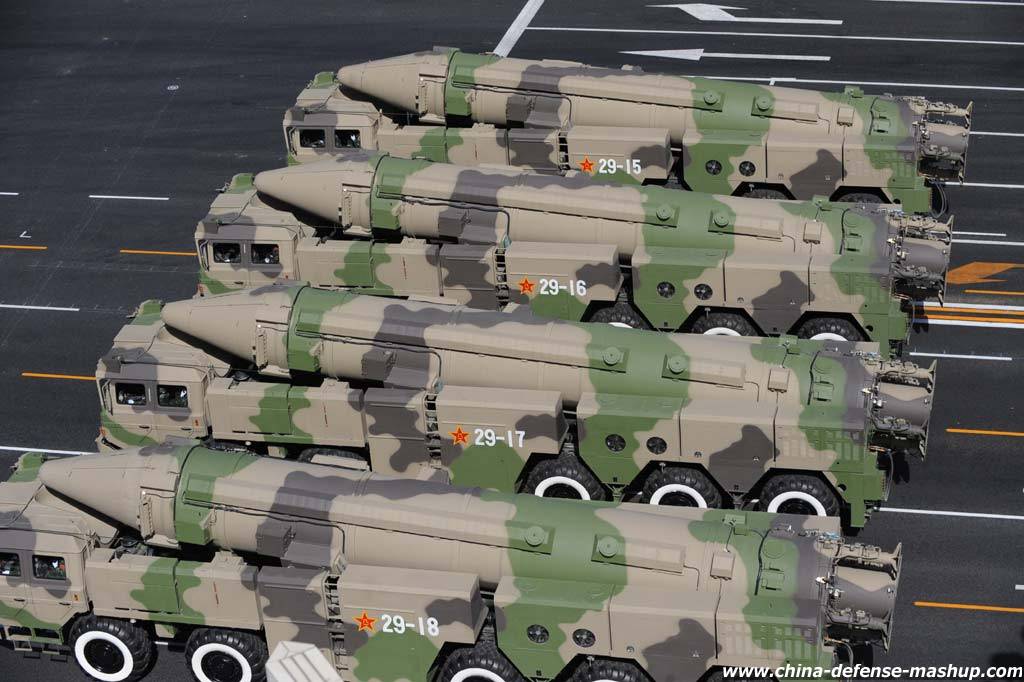Originally appeared at Topwar, translated by Comrade Korolyov exclusively for SouthFront
The flagships of the American Navy, the embodiment of US’ might, ambitions and technological prowess are ready to dissapear from the oceans. Akin to dinosaurs that once were plenty, and nowadays extinct and gone forever.
These are the perspectives drawn for these monsters of the American Navy by senior analyst Ben Ho Wan Beng of the prestigious School of International Affairs in Singapore. His report was published by the American naval academy and resembles an ode of rememberance for these gigantic warships that are slowly coming off the world’s stage.
TIP: The McDonnell Douglas F/A-18 Hornet is a twin-engine supersonic, all-weather carrier-capable multirole combat jet. It’s designed as both a fighter and attack aircraft. Number built: F/A-18A/B/C/D: 1,480. Unit cost: US$29 million.
Firstly, this is due to a rather small range of the naval aviation aircraft. Most of the F-18 aircraft cannot be more that 500 nautical miles off the mothership. And even if the ship is at that distance away from the shoreline, there is no chance the Hornets will get into the enemy territory – no more fuel. If their objective is to attack a country which is not a small one, or an island nation, but a country with a deep “strategic depth” these aircraft are vurtually useless.
TIP: The Lockheed Martin F-35 Lightning II is a family of single-seat, single-engine, all-weather stealth multirole fighters. It’s undergoing final testing. Number built: 174. Expected unit cost (mass production): US$83.4 million – US$108.1 million.
The F-35 that is meant to replace it (the American media calls this Homer’s “Iliad”-worthy epos with the development of this aircraft, a soap opera without any hesitation anymore) will not solve anything, because its combat radius is only 50 nautical miles greater.

F/A-18 Hornet
Secondly, two of the likeliest USA’s military opponents – Russia and China are creating new generation of long range missiles that could be “moved” deep into the continent – the analyst thinks, that they could be moved up to 800 miles (1482 km) inland and still be highly effective against naval targets. The missile defense lines, because of how far they are inland, how fast and how low flying the rockets are, are virtually invincible for the American aircraft carriers.
TIP: The Dong-Feng 21 (DF-21) is a two-stage, solid-fuel rocket, single-warhead medium-range ballistic missile (MRBM). Range: 1,770 km.
So, the defending side has no need to attack the aircraft carrier with dozens of their own naval aviation aircraft – a Chinese DF-21 missile, just one, would be sufficient to sink a ship which is 335 m long, together with the 6000 men on board. It is difficult to say where the aircraft would land after that (and Nimitz-class carrier hauls 66-84 of them).

Chinese DF-21
The new series – Gerald Ford class carriers. The first one was launched in 2013. By 2019 it is planned to build a second one. Their characteristics are vastly different, however, considering the existing conditions, these ships are made redundant by Russian and Chinese defenses.
TIP: The Nimitz-class supercarrier is a class of ten nuclear-powered aircraft carriers in service with the United States Navy. It has overall length of 333 m and full-load displacement of over 100,000 long tons.
The aircraft carriers that are capable by their mere presense near a country’s shores strike fear in the hearts of a small country’s government are turning into a gargantuan sitting duck for Russian hunter-killer submarines, Kirov-class cruisers and countless long-range missile systems. They are probably going to be about as useful as a movie prop in the next few decades. In the worst-case scenario – they would be scrapped. Titans are turning into “Titanics”.
And the massive program to build these monsters nowadays exists more to beat the cash out of American taxpayers in favour of the American military industries. The main American enemy – Russia – isn’t scared of the fleet of naval airfields, but these ships are still capable of earning big money for the people who own the industries that build them.
Another reason why American military can insist on having these ships in their arsenal – this is how in the eighties the Americans nudged the USSR into spending massive amounts of money to respond to the “Star Wars” program, which turned out to be a bluff. But the economy of the Soviet Union received a harsh blow. But if this is why the U.S. is still running around the world with their aircraft carriers (carefully ensuring the said aircraft carriers are a long way away by the time the Russian Navy shows up in the region), it is doubtful anyone in the Russian Defense Ministry will bite into that trick again.


And Erdogan wants to create his own aircraft carrier……….
The US Navy’s aircraft carriers are considered to be sovereign territory, in some ways similar to embassies. In the past, when we had real Commanders-in-Chief, the message was sent that an attack on a carrier would result in retaliation, up to and including a nuclear attack. This gave our enemies pause. Note that there were no attacks on our carriers. It worked. Ben Ho Wan Beng of the prestigious School of International Affairs in Singapore is either missing the rest of the picture, or is propagandizing in the form of a professional paper.